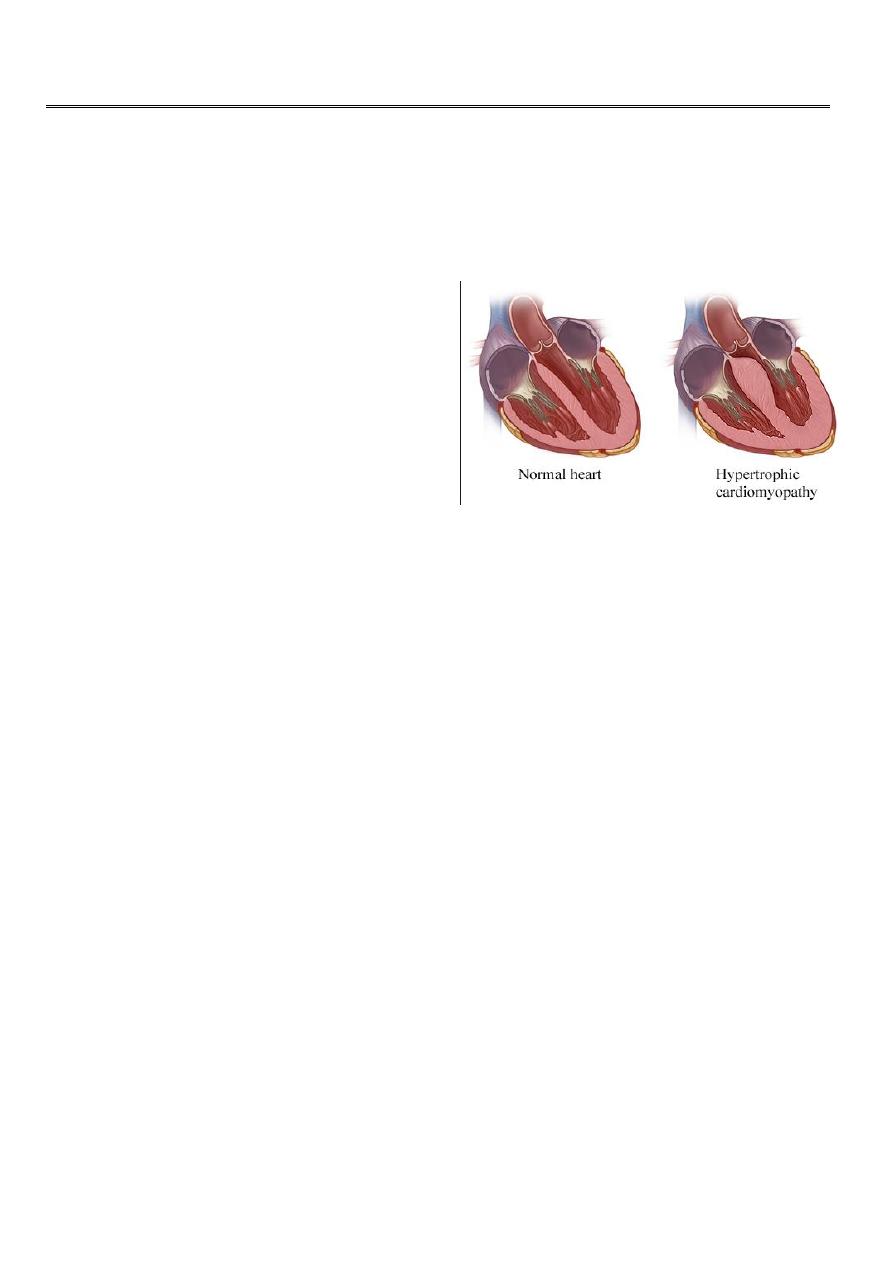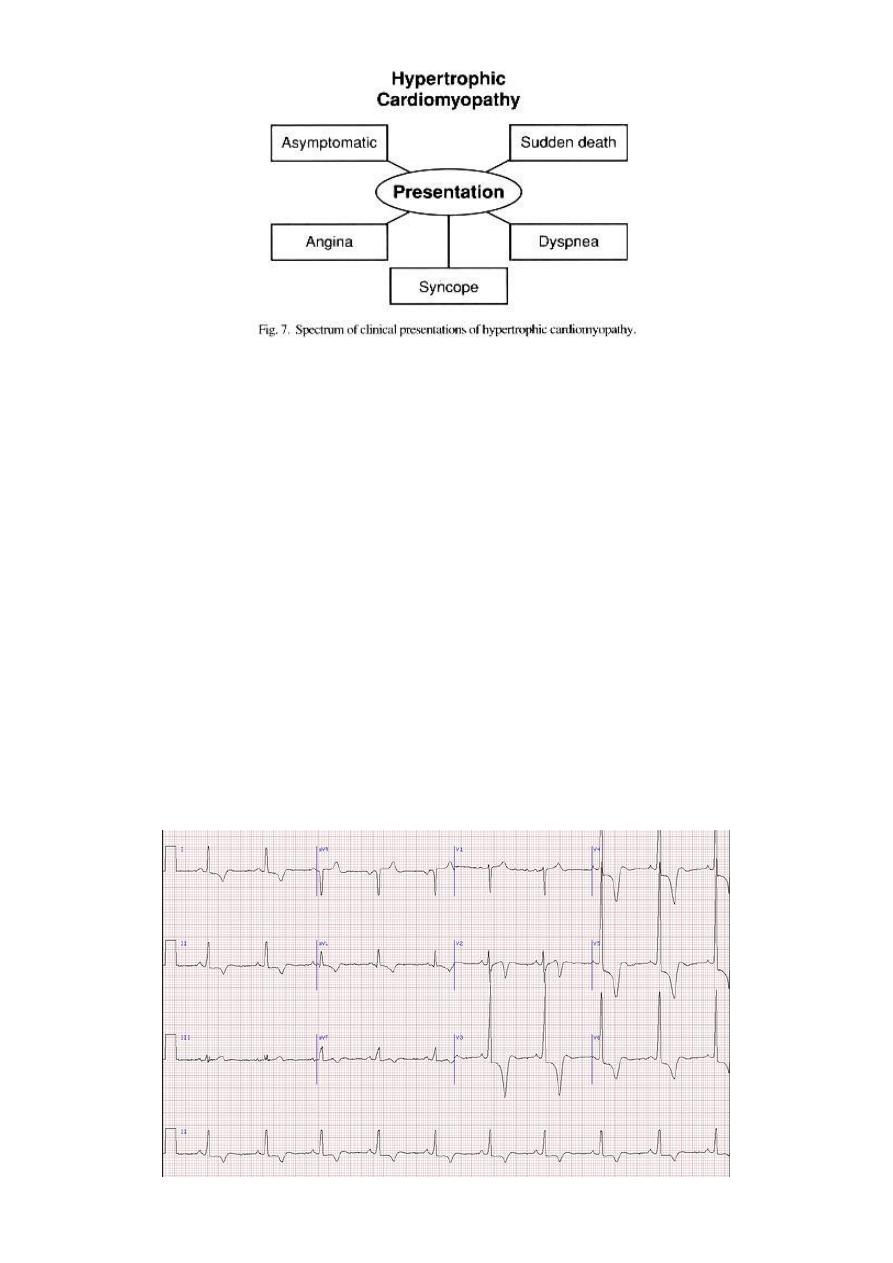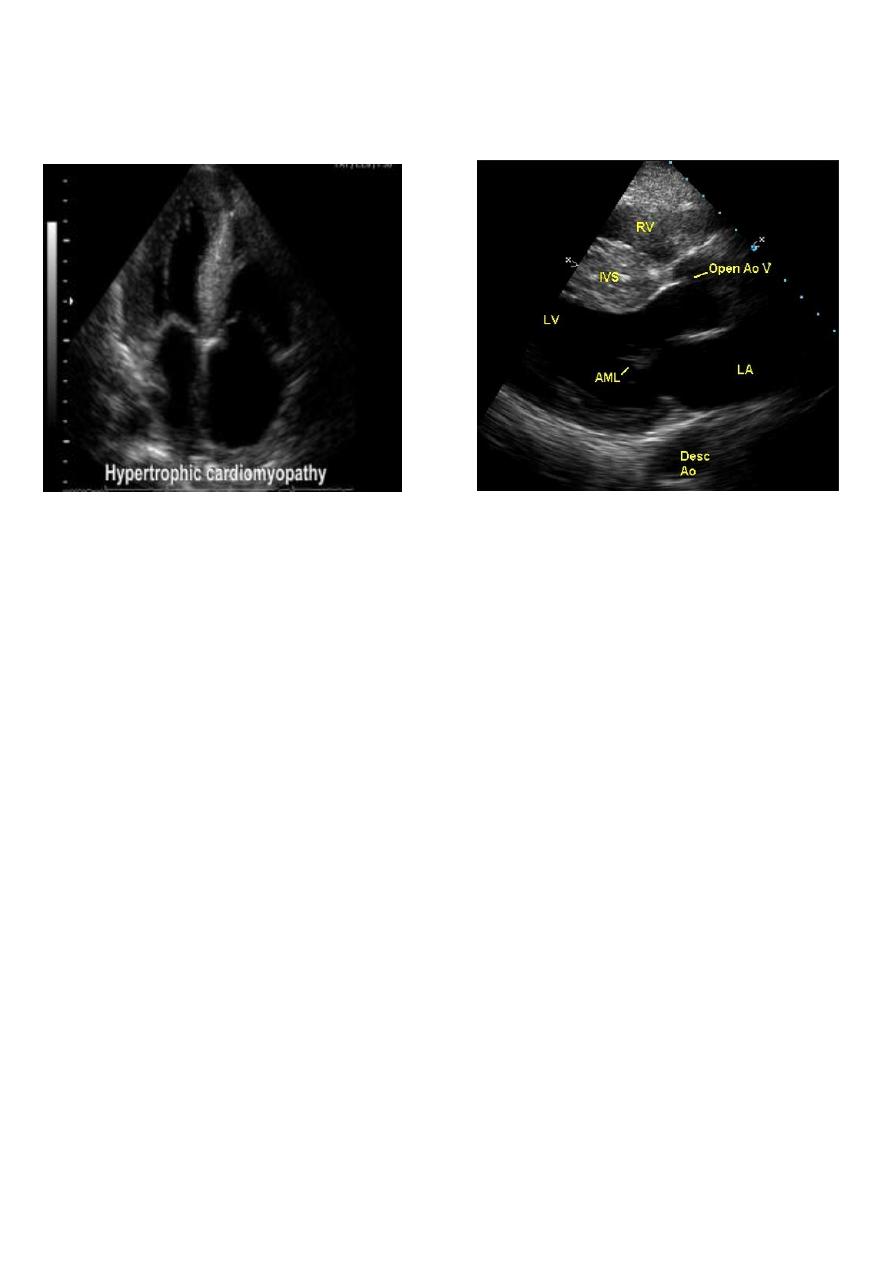
1
4th stage
Medicine
Lec-13
Dr.Jasim
23/2/2016
Hypertrophic cardiomyopathy
This is the most common form of cardiomyopathy
Genetic disorder, usually with autosomal dominant transmission
Types :
Obstructive 25 %
Non obstructive
The hypertrophy may be generalised or confined largely to the interventricular septum
(asymmetric septal hypertrophy) or other regions (e.g. apical hypertrophic cardiomyopathy)
Microscopically :
HCM is characterized by myocyte disarray in which there is loss of the normal parallel
arrangement of cardiomyocytes, cells instead forming circles or whorls around foci of
connective tissue. The myofibrillar architecture within cells is also disrupted (myofibrillar
disarray).
Pathophysiology :
Dynamic LV outflow tract obstruction ( atleast >30 mm, usually > 50mm Hg)
Diastolic dysfunction
Myocardial ischemia
Mitral regurgitation
Arrhythmias

2
Signs :
1. Apex localized, sustained
2. Double apex beat
3. Palpable S4
4. Prominent “a” wave
5. Rapid upstroke carotid pulse, “jerky” bifid (spike-and-dome pulse)
6. Harsh systolic ejection murmur at base
7. MR: systolic murmur
ECG :
1. LA enlargement
2. Pathologic Q waves, most commonly in the inferolateral leads.
3. Voltage criteria for LVH
ECG 1

3
ECHO
Echocardiography is diagnostic
Treatment :
All first degree relatives: screening…
echocardiography/genetic counseling
Avoid competitive athletics
Symptomatic : Beta blockers or calcium channel blockers
Antiarrythmic drugs : Disopyramide or amoidarone
Invasive treatment :
High risk or non responders to medical treatment
1. ICD ( high risk patients)
2. DDD pacemaker
3. Alcohol septal ablation
4. Surgery Myectomy
Restrictive Cardiomyopathy (RCMP)
Definition:
Restrictive cardiomyopathy is characterized by decreased ventricular compliance(stiff
ventricles), usually secondary to infiltration of the myocardium.
These patients have impaired ventricular filling and reduced diastolic volume, normal
systolic function, and normal or near-normal myocardial thickness.

4
Amyloidosis is the most common cause in the UK
although other forms of infiltration (e.g. glycogen storage diseases) and a familial
form of restrictive cardiomyopathy do occur.
Diagnosis can be very difficult and requires complex Doppler echocardiography, CT or
MRI, and endomyocardial biopsy.
Treatment is symptomatic but the prognosis is usually poor and transplantation may
be indicated.
Arrhythmogenic right ventricular
cardiomyopathy
In this condition, patches of the right ventricular myocardium are replaced with
fibrous and fatty
tissue .
It is inherited as an autosomal dominant trait .
The dominant clinical problems are ventricular arrhythmias, sudden death and right-
sided cardiac failure.
The ECG typically shows a slightly broadened QRS complex and inverted T waves in
the right precordial leads.
MRI is a useful diagnostic tool and is often used to screen the first-degree relatives of
affected individuals.
Patients at high risk of sudden death can be offered an ICD.
